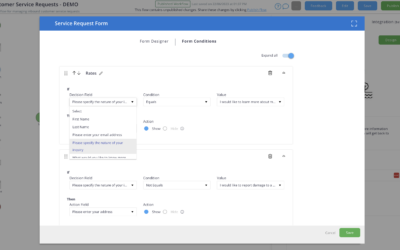Our latest update is about to redefine how you visualise and navigate your processes – introducing Process Map linking! Connecting processes and navigating seamlessly between them has never been more accessible.

5 Reasons Why You Shouldn’t Get Flowingly Mapping Pro
5 Reasons Why You Shouldn’t Get Flowingly Mapping Pro
1. You’re 100% happy with your current process mapping solution
That’s awesome. But hang on… why are you reading this?
Flowingly Mapping Pro was created for a couple of people:
- Those who were fed up overpaying for legacy process tools
- Those who wanted to upgrade from your Visios, Lucids and Draw.ios of the world
If that’s not you, we might not be for you.
If you’re on the fence, read on.
2. You want strict BPMN 2.0 adherence
Yeah, nah. That’s not us.
BPMN 2.0 100% has its place. But as you’ll hear us talk about, we aim to take the BS out of work and that means providing a toolset that anyone in your workplace can use.
And we’re pretty confident you’re not training your whole workforce in BPMN 2.0.
We love BPMN. That’s why we took our favourite parts of it, the most commonly used and understood elements, and used them for Flowingly right from Day 1.
But BPMN 2.0 is confusing for most, with over 70 different symbols and notations to wrap your head around.
3. Budget isn’t an issue and you’re happy to pay whatever it takes for the best process stack around
Hey big spender. Look at you with your money bags!
If you have unlimited pockets, go buy the best process tools you can, hire a bunch of engineers and integrate the s#@% out of them.
Flowingly Mapping Pro is for those who don’t want to spend $40k+ on their process mapping solutions. It’s for teams who need to map now, and when you are ready to automate you can just add on Flowingly Automation Pro.
4. You don’t plan on automating any processes
Look, we get it. Automation is the realm of IT. You already automate through your ERP. You’re not mature enough for process automation.
We’re going to do our utmost to challenge those statements.
Here’s why we believe that business-led process automation is so important: there are hundreds of manual processes across your organisation, and if you wait for IT to automate them in your clunky ERP you will still be doing them manually when you retire.
Unfortunately, IT is subject to a major skills and budget shortage and core systems like ERPs and CRMs don’t typically have flexible and rapid workflow building tools.
5. You prefer depth of features over simplicity
Everyone (including us) wants more features and more power in their software.
If only it were that simple.
If you look at the software you truly love, as a user you’ll often find they have something in common. Simplicity.
It’s easy to keep building more and more features into your applications. It’s really hard to do it in a way that keeps the software enjoyable and easy to use.
That’s our focus at Flowingly. We don’t aim to provide the most powerful process tools that appeal to the 0.1%. We aim to take the BS out of work and that means providing process tools that are simple and easy to use for everyone.
Flowingly offers a world of process mapping benefits, but it’s crucial to determine if it’s the right fit for your unique circumstances.
Take a step back, assess your needs, and find a tool that aligns with your goals and resources. Remember, it’s all about finding that sweet spot where your organization can thrive with the right process mapping solution.
The Flowingly Blog
Get the flow-down on all things Flowingly. From process tips to product, we cover everything you need to level up your processes.
Flowingly Product Update – Process Map Linking
The 6 Things Every Team Needs for Success in Process Mapping and Automation
We identified the 6 things every team needs to ensure their process mapping or automation projects and efforts are a success.
5 Reasons Why You Shouldn’t Get Flowingly Mapping Pro
In this blog, we explore five compelling reasons why opting for Flowingly Mapping Pro might not be the ideal choice for your organisation’s mapping needs.






